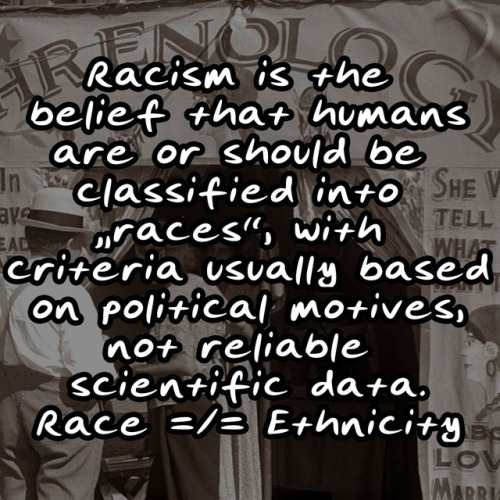#ohio scientific
Note
I still believe the craziest form of computer program storage format from the 1980s is the cassette tape. Logical I get it but to store entire programs on little tape (that I only remember using to play music) is just crazy to me. Idk
Agreed, cassette tape for data storage was really clever. The concept had its heyday was the 1970s in a wide variety of encoding schemes for different computer platforms. It did persist into the 80s, mostly in Europe, while the US switched to floppy disks as soon as they were available for systems. The majority of my Ohio Scientific software is on cassette.

Talking with UK vs. US Commodore 64 users in particular will highlight the disparity in which storage mediums that were commonplace. I've got a few pieces of software on tape for mainly the VIC-20, but I rarely bother to use it, because it's slow and annoying. To be fair, Commodore's implementation of data storage on tape is pretty rock solid relative to the competition. It's considered more reliable than other company's but Chuck Peddle's implementation of the cassette routines are considered quite enigmatic to this day. He didn't document it super well, so CBM kept reusing his old code from the PET all the way through the end of the C128's development 7 years later because they didn't want to break any backward compatibility.

The big thing that really made alot of homebrewers and kit computer owners cozy up to the idea was the introduction of the Kansas City Standard from 1976. The idea of getting away from delicate and slow paper tape, and moving towards an inexpensive, portable, and more durable storage medium was quite enticing. Floppy disk drives and interfaces were expensive at the time, so something more accessible like off the shelf audio tapes made sense.
I've linked two places you can read about it from Byte Magazine's February 1976 issue below (check the attribution links).
You might recognize a familiar name present...


There are a few ways to encode binary data on tape designed to handle analog audio, but the KCS approach is to have 1's be 8 cycles of 2400Hz tone, and 0's be 4 cycles of 1200Hz tone. I say cycles, because while 300 baud is the initial specification, there is also a 1200 baud specification available, so the duration of marks vs spaces (another way of saying 1's and 0's), is variable based on that baud rate. Many S-100 computers implemented it, as do a few contemporary proprietary designs.
The big 3 microcomputers of 1977 that revolutionized the industry (Apple II, Commodore PET 2001, and Tandy TRS-80 Model I) each have their own cassette interface implementation. It kept costs down, and it was easy to implement, all things considered. The Apple II and TRS-80 use off-the-shelf cassette deck connections like many other machines, whereas the original variant of the PET had an integrated cassette. Commodore later used external cassette decks with a proprietary connector, whereas many other companies abandoned tape before too long. Hell, even the original IBM PC has a cassette port, not that anybody bothered to use that. Each one used a different encoding format to store their data, rather than KCS.
Here's a sample of what an OSI-formatted tape sounds like.
And here's a Commodore formatted tape, specifically one with VIC-20 programs on it.
I won't subject you to the whole program, or we'd be here all day. The initial single tone that starts the segment is called the "leader", I've truncated it for the sake of your ears, as well as recorded them kinda quietly. I don't have any other tape formats on hand to demonstrate, but I think you get the idea.
You can do alot better than storing programs on tape, but you can also do alot worse -- it beats having to type in a program every time from scratch.
267 notes
·
View notes
Text
let’s crowdsource my career trajectory (note that i absolutely will not be listening to this poll. unless)
#text tag#i would still be an editor at all of these but just different flavors#current job: extremely passionate about it; traditional book publishing is my spot; i can’t believe it’s not making me prematurely gray; i#don’t have any money#scientific journal: seems more useful to the world; COPYEDITING; very evil; slightly more money but uhhhh#insurance company: i want to edit complex insurance documents actually; more money; mandatory in-office and i couldn’t leave ohio SCREAM
6 notes
·
View notes
Photo

“Review of Mozambique's Samora Machel: A Life Cut Short, by Allen F. Isaacman and Barbara S. Isaacman.” por Silas Fiorotti, in Africa Today, 69(1-2): 268-270, 2022.
#book review#books#african studies#estudos africanos#Samora Machel#allen isaacman#Barbara isaacman#silas fiorotti#africa today#scientific journals#ohio university press#indiana university
3 notes
·
View notes
Text
Venting when angry seems sensible. Conventional wisdom suggests expressing anger can help us quell it, like releasing steam from a pressure cooker.
But this common metaphor is misleading, according to a new meta-analytic review. Researchers at Ohio State University analyzed 154 studies on anger, finding little evidence that venting helps. In some cases, it could increase anger.
"I think it's really important to bust the myth that if you're angry you should blow off steam – get it off your chest," says senior author Brad Bushman, a communication scientist. "Venting anger might sound like a good idea, but there's not a shred of scientific evidence to support catharsis theory."
Continue Reading.
223 notes
·
View notes
Text
Sept. 19, 2023
A network of Native American ceremonial and burial mounds in southern Ohio have been added to the list of world heritage sites of the United Nations Educational, Scientific and Cultural Organization (Unesco). The move places what the organization describes as “part cathedral, part cemetery and part astronomical observatory” on the same cultural plane as the Acropolis, Machu Picchu, the Taj Mahal, Stonehenge and the Great Wall of China.
Read more.
207 notes
·
View notes
Text
Anti-Trans Legislation: Feb 25-Mar 3 in Review
The following bills were introduced:
Two schooling bills, Florida S1320 and H1223, were pre-filed.
Georgia HB653, an under-18 healthcare ban, was introduced.
Iowa HSB208, a school-based bathroom bill, was introduced and passed in its subcommittee.
Iowa HB482, a school-based bathroom bill, was introduced and referred to the House Judiciary Committee.
Iowa HSB214, an under-18 healthcare ban, was introduced and had a House subcommittee hearing.
Iowa SSB1197, an under-18 healthcare ban, was introduced and had a subcommittee meeting.
Iowa HJR8 was introduced and referred to the House Judiciary Committee. This is a joint resolution attacking marriage.
Iowa HSB222, a schooling/parental rights bill, was introduced and referred to the House Education Committee yesterday.
Maine LD930, a sports ban bill that specifically targets trans girls, was introduced and referred to the Joint Judiciary Committee.
Missouri HB1332, a tax bill that would punish institutions for providing gender-affirming healthcare, was introduced and read.
Missouri HB1364, a drag ban bill, was introduced and read for a second time.
Ohio HB68, a "SAFE" act, was introduced and referred to the House Public Health Policy Committee.
Texas HB2862 and HB3147 were filed. These prison bills would prohibit incarcerated trans and gender diverse folks from being housed in facilities consistent with their gender identity.
The following bills progressed:
Bathroom bills: (A bathroom bill denies access to public restrooms by gender or trans identity. They increase danger without making anyone any safer and have even prompted attacks on cis and trans people alike. Many national health and anti-sexual assault organizations oppose these bills.)
Arizona SB1040, a school-based bathroom bill, passed in the Senate and crossed over to the House.
Arkansas SB270, which would make it “criminal indecency with a child” for trans folks to use bathrooms consistent with their gender identity, was re-referred to the Senate Judiciary Committee.
Idaho SB1100, a school-based bathroom bill, had a second reading and was filed for a third reading.
Idaho S1016, which already passed in the Senate, had its first reading in the House and was scheduled for a second reading.
Iowa SF335, a school-based bathroom bill, passed committee and renumbered as SF482.
Heathcare bills: (Healthcare bills go against professional and scientific consensus that gender-affirming care saves lives. Denying access will cause harm. Providers are faced with criminal charges, parents are threatened with child abuse charges, and intersex children are typically exempted.)
Florida S0952, the “Reverse Woke Act,” was referred to the Senate Health Policy Committee.
Georgia SB140, an under-18 healthcare ban, had a second reading.
Indiana SB0480, an under-18 healthcare ban, passed in the Senate and crossed over to the House.
Kansas SB233, which already passed in the Senate, was referred to the House Health and Human Services Committee. This is also an under-18 healthcare ban.
Nebraska LB574, again an under-18 healthcare ban, was placed on general file, meaning it is now on the floor.
Oklahoma SB129 passed in committee and will head to the Senate floor. A reminder that this bill had an emergency added, so it would immediately go into effect if it passes.
Texas HB776, an abortion and under-18 healthcare ban, was referred to the House Public Health Committee.
Utah HB0132 returned to committee yesterday after it failed in committee in January. This is also an under-18 bill.
Public performance bills: (also known as "drag bans" restrict access for folks who are gender non-conforming in any way. They loosely define "drag" as any public performance with an “opposite gender expression,” as sexual in nature, and inappropriate for children. This also pushes trans individuals out of public spaces.)
Arizona SB1698 passed in committee and is headed to the Senate.
Arkansas SB43 was signed by the Governor. This is the drag ban bill that was largely amended to only cover public nudity.
Montana HB359, which already passed in the House, had its first reading in the Senate.
Oklahoma SB503, an obscenity bill, passed in committee.
South Dakota HB1116 an "obscenity bill" that prohibits "lewd or lascivious content," which already passed in the House, passed in committee.
Tennessee SB0841 had its action deferred until 3/14.
Texas HB708 was referred to the House State Affairs Committee.
Schooling bills: (Schooling, or so called “parental rights” bills force schools to misgender or deadname students, ban instruction on sexual orientation and gender identity, and make schools alert parents if they suspect a child is trans. They remove life-saving affirmation and support for trans youth.)
Arizona SB1001 passed in the Senate and was transmitted to the House.
Arkansas SB294��is headed to its final vote in the House.
Florida H1069 was sent to another education subcommittee in the House.
Indiana HB1608 passed in the House and crossed over to the Senate where its first reading is scheduled for Monday.
Iowa HSB222 passed in its subcommittee.
Missouri HB1258 had a second reading.
Oklahoma SB503 passed in committee this morning and is headed to the Senate floor.
Tennessee HB1269 was referred to the House Finance, Ways, & Means Committee.
Utah SB0283, an anti-DEI bill for higher education, passed in its Senate Revenue and Taxation Hearing and is now headed to its second committee.
Sex designation bills: (Sex designation bills make it harder for trans folks to have IDs, such as birth certificates, that match their gender identity. They can force a male or female designation based upon sex assigned at birth. Some ban a non-binary “X” marker or require surgery to qualify for ID updates.)
Montana SB458,passed in committee and will head to the Senate floor.
Tennessee SB1440 passed in committee and will head to the Senate floor.
Sports ban bills: (Most sports bills force schools to designate teams by sex assigned at birth. They are often one-sided and ban trans girls from playing on teams consistent with their gender identity. Some egregious bills even force invasive genital examinations on student athletes.)
Arkansas HB1156 was re-referred to the Senate Education Committee.
Florida H0999 was sent to another education subcommittee.
Wyoming SF0133, which already passed in the House, passed in the Senate and will now head to the Governor for signature.
Other anti-trans bills:
Kentucky HB470 passed in committee. This bill defies our categorization system; it's a healthcare bill, but also functions as a bathroom, sports, name change, and a sex designation bill; it packages anything attacking trans youth. A live-tweet of the hearing is here, as can the many Kentucky residents who testified against it.
West Virginia HB3042, a “religious freedom” bill, passed in the Senate and is headed to the Governor for signature.
Texas SB559, a “religious freedom” bill, passed in committee and will head to the Senate floor.
#important#anti trans legislation#trans lives matter#trans#trans lives#lgbt#lgbtq#lgbtq rights#equality#discrimination#bigotry#politics#us politics#current events#news
371 notes
·
View notes
Text
20 Great Horror Podcasts To Fall Asleep And Have Nightmares To
I listen to a lot of horror podcasts, and if you’re looking for a spooky recommendation for October, I am here to provide. These are my personal top ten (not in any order) and ten rapid-fire “honorable mentions” as well.
The Silt Verses – Strange, soothing folk horror. Two followers of an outlawed god travel their deity’s great black river, hiding from a police manhunt and encountering other weird gods that have flourished in forgotten rural territories. There is a god in your fridge, a god in your radio, a god in your deepest regrets, and none of that is a good thing.
The Hotel – Someplace beyond time and space is The Hotel, where guests check in but they don't check out *Vincent Price laugh* instead meeting a violent death at the will of the Hotel. The truly stand out part is the hotel staff, who end up getting most of the focus. The interplay between these terrible monsters who are all trapped in hell together is absolutely fantastic, horror office politics at its finest.
The Magnus Archives – Jonathan Sims’s job is to record statements of encounters with the supernatural. But the more he records, the more connections he makes between these seemingly disconnected tales of terror. A horror/tragedy with a deep emotional core, difficult moral questions, and just the right amount of humor. You’ve already heard of this one why am I even telling you about it, it’s good.
Unwell – Mount Absalom, Ohio is a small town, the kind of place where you don’t lock your doors at night. Where the ghost tour at Fenwood House runs rain or shine. Where buildings still bear the marks of the last great fire in the Burning Woods. Where you might hear echoes of conversations long past in the observatory on Chapel Hill. Unwell is particularly memorable for its fun, colorful characters and for its themes of history and loss. A Midwestern Gothic mystery about family, memories, and the things that haunt us in the end.
Down – A submarine called the Virgil enters a seemingly bottomless Antarctic trench. Its mission: to map the pit and collect samples of any scientifically interesting creatures within. But when an encounter with one of these creatures goes awry, tensions form among the crew, and they begin to wonder how safe they really are. All the while, the Virgil descends … and descends … and descends.
Mockery Manor – It’s the summer of 1989, and people are going missing in Mockery Manor theme park. It’s up to a pair of teenage sisters to unravel the mystery and catch the killer – if they can get past their own traumas and work together. If you like 80s and 90s horror/slasher movies, this one is for you. The audio production values are some of the best I’ve seen, and include in-universe pop songs and wonderfully atmospheric 90s horror synth.
I Am In Eskew – David Ward is lost. He’s found himself in Eskew, a place of steep and winding streets, where the architecture changes at will and the rain never stops. Eskew grips its people tight, and does not let go easily. These are David’s stories of the city that has claimed him, and of someone who is looking for him there.
Gospel Of The Flood – The world is sinking. Slowly, day by day, the continents are vanishing under the waves. This is the age of the Flood. We follow a priest who has lost his faith, as he searches for the people he remembers in this doomed and dying world. A tragedy/existential horror about faith, despair, kindness, cruelty, and the tide that carries it all away.
The Lost Cat Podcast – Our narrator is looking for his cat. It isn’t the nicest cat, nor the most well-behaved, but it is his cat and he misses it. As he searches he encounters many people, many creatures, and some truly terrible things. He’d like to tell you about them. The tone for this one fluctuates from story to story, from genuinely horrifying to purely comedic to incredibly soft and gentle.
Archive 81 – A man named Daniel Powell listens to some audio tapes. This will surely not have severe consequences for anyone. Melody Pendras interviews the tenets of a building where reality wears thin at the edges. A play from golden age of radio brushes against something mankind wasn't meant to hear. Two siblings attempt an occult ritual left by their estranged (and now deceased) father. It's a lot of weird analog horror with fun found footage scattered within.
(Note: Archive 81 is genuinely nothing like the Netflix adaptation of the same name. The plot is entirely different, the characters act differently, the podcast is a surreal cosmic horror while the adaptation is a straightforward demon cult and Netflix made Melody straight. Don’t mention the Netflix adaptation in this household we all hate the Netflix adaptation here.)
Honorable Mentions: (i.e., I like them but for one reason or another they weren’t right for the top ten.)
Midst - More Fantasy/Weird/Western than horror, but if you like horror you’ll love the monsters, the cosmic horror reality storms and the truly weird imagery. The unique narration style is like nothing else I’ve ever heard and keeps the energy high.
The White Vault S1 & S2 – Frozen tundra horror, similar vibes to The Thing, in a found footage format. I mostly recommend the first two seasons, because they’re the most solid and they work as a self-contained story.
Old Gods of Appalachia – Appalachian folk horror, angry ghosts and forest gods. Some characters and threads run through it but largely each season is its own setting and story.
Alice Isn’t Dead – A truck driver searches America for the wife she long assumed was dead. Soft spoken road trip horror slowly unraveling an inhuman conspiracy.
Woe.Begone – More scifi/thriller than horror, but good shit. What begins as a mysterious and violent ARG with real-life consequences becomes a search for the technology that makes the game possible. Great music, fun narrator, dark themes.
Death By Dying – The Obituary Writer of Crestfall, Idaho just can’t stop himself from investigating the mysterious deaths he’s supposed to be writing about. Very silly and whimsical, more black comedy than pure horror with big Welcome To Night Vale vibes.
A Voice From Darkness – Parapsychologist Dr. Malcolm Ryder helps those who suffer from supernatural troubles on his call in radio show. I’ll warn that the update schedule is a bit slow and not super consistent.
The SCP Archives – A podcast that takes stories from the SCP Foundation wiki and gives them voice acting, foley and the full audio treatment. Picks a pretty good variety, too.
The Wrong Station – Anthology podcasts are always a little hit and miss, but the fact that The Wrong Station keeps the same writing/VA team from episode to episode really helps keep it consistent. I made a list of my favorite episodes here.
Nightlight – Anthology podcast with creepy stories written by black writers and performed by black actors. Like all anthologies, you’ll like some stories better than others, but they cover a pretty wide range.
894 notes
·
View notes
Text
(Previous post for context)
I might have found some kind of ceremonial mound. I found a record of one other burial mound in this county and I found it and it's still standing - yay! It's right on the county border. But what the hell is across the road from it?? It's a mound-looking structure with tiers and an elongated flat top. On a farm. But I thought it couldn't be a mound because it's sitting right out in the open. Then I thought, "Ohhh, stupid me, it must be a reclaimed landfill! Duh!" But I did the research and there has never been a landfill there. Huh?? My dad said maybe it was a filled-in strip mine, but I was like, "Way ahead of you! Here's a map of every closed mine in Ohio - it's not there. There's never been a mine there, either."
It doesn't look like anything but a hill from the road, so maybe it's just big enough that people never really saw it. The back part with the lower level isn't visible from the road.

Reasons why this COULD possibly be an ancient mound:

There is a known mound right across the road, and several other smaller mounds and a native cemetery site (no mound) within 1-2 miles to the south across the county line.
It's next to a creek that later Native Americans used as a main travel route.
It's next to one of the main ancient trails in the county (the road now follows it.)
There's a cemetery next to it. No idea why, but SO many settlers and early towns built cemeteries next to or on top of burial mounds. Not always, but so often it's one of the first things I look for if I spot a potential mound.
The flat area on top of the mound is aligned exactly east-west. Ceremonial mounds were often aligned to the solstices or to important stars like Polaris. (The county line is slightly tilted. The mound is accurate, E-W.)
Other ceremonial mounds kinda look like reclaimed landfills. Here's Monks Mound in Illinois:

The oldest topo map I can find shows it there in 1944. The oldest aerial photo shows it in 1958. Being farmed. Btw, modern landfill regulations didn't happen until 1959. They mostly just burned or buried shit and called it a day.
So there's ample reason to investigate more. I just want to know WHAT it is.
And in related news, I'm now talking to the county Historical Society because I want to work with them and start a county "Prehistoric Preservation Society" because I am definitely already finding mounds. Most are small and I've found at least a dozen throughout the county that I'm certain are mounds and 50 or so more that look very likely. But this one and several other sites with big ones are the ones I want to focus on first because they'll be most likely to garner scientific interest.
184 notes
·
View notes
Text
https://arstechnica.com/science/2022/10/us-publics-trust-in-scientists-reverts-to-pre-pandemic-levels/?comments=1&post=41332618
It’s wild how on the nose this comment is:



Comment text in image:
“I really wish reporters would do a better job on this topic. Republicans don't 'distrust science'. Republicans, as they are made up today, are primarily concerned they will fall out of the dominant culture (white christians) in the US and that other cultures will continue to get acknowledgement and respect in policy decisions. Understand that almost all policy decisions - and this is true pretty much everywhere - have a cultural element to them. France's headscarf ban isn't based on science, but on armchair sociology which is part of their culture. Same for tax rates which feel too high or low, but aren't based on some hard math economic model, and so on. 18 as an age of consent is a number pulled out of the air (should be higher for some people, maybe it could be lower for others), as is a 40 hour work week, 21 to drink, 65 to retire, etc. and what we consider 'good' or 'bad' are largely cultural. Eating dogs and horses is 'bad' but pigs are as smart as dogs.
Republicans don't distrust science. But because Republicans are losing the culture war pretty profoundly (I know recent court decisions would suggest otherwise, but the public is increasingly accepting of the things they think should be illegal) the thing they *really* fear is losing cultural authority - the ability to veto other cultures. They lost the ability to veto the LGBTQ community as Americans are increasingly accepting of gay and trans people. Black media increasingly stands alongside white media. Latino and asian media are making gains as well. Disability communities are also making headway. All of these other cultural groups are gaining influence in how the broader community see them, and as a result they get more of a seat at the policy table. To Republicans, all of these gains represent a loss of cultural veto power, which is why the overt racism and antisemitism are ramping up - they are pushing harder against a trend that isn't going their way. They say they are being replaced, but they aren't. They just have to survive a multicultural space like everyone else for the first time in 400 years. This is why they get pissed off when the green M&M isn't sexy any more - *they didn't get a say*. It's a bit of culture that changed which they didn't get a say in, and that's both terrifying and infuriating to them. They're *supposed* to have cultural authority.
Science is a difficult category in this environment because sometimes is favors your cultural instincts and sometimes it doesn't. But when your cultural foundation for lawmaking (white christian culture) is being eroded any scientific view that undermines your cultural instincts feels like a threat. But the real threat is when that scientific view arrives when you are out of power. See, there's nothing that prevented Trump from leaning into the science when Covid broke out, and Republicans would have lined up behind it, because it wasn't the science they opposed, but *who was setting the policy based on that science*. If Trump put his weight behind it, they'd be on board, because it preserves their authority by branding it as a Republican policy - and that really what they want. Because Fauci (not a Republican) was pushing against Trump, because Trump instinctually opposes vaccines and decided that Covid was bad for his polling, that's what made the science toxic to Republicans. Fauci and Democratic officials in states, and then Biden, setting the policies was what mattered. There was a hot minute there where Mike DeWine in Ohio was pulling in the right direction but Trump got in front of the whole thing.
This is also the dynamic behind the election denialism. They don't believe the election was stolen because of evidence. They believe the election was stolen because if it wasn't, than a loss by 7 million votes by the president that has fought harder for that white christian culture (I mean, opening fire on a Black Lives Matter protest in order to hold up a bible at a photo op is pretty fucking on the nose there) and presumably had that culture most strongly aligned behind him would be evidence that they have fallen into the minority permanently. If white christian culture was dominant numerically, they should have won that easily. It's the inability to accept their minority status that *requires* the election be stolen, because the alternative means that the whole game is up - 400 years of slavery and genocide and a civil war to preserve that cultural dominance is finally lost. Maybe just barely, but lost all the same.
My point is that Republicans aren't anti science, but science will be sacrificed as just another pawn in the culture war if that's what is required. If you aren't explaining *why* this is happening, then you are somewhat insinuating that it's the fault of the scientists and leaving the readers to wonder why some scientific views are embraced and others aren't, and the answer has nothing to do with science or scientists. It has everything to do with the messenger and what the science says about their message. I know that seems to over-politicize the topic, but you put 'partisan' in the headline, so you were willing to open the door, just not walk all the way through.”
687 notes
·
View notes
Text
Compared to ecologically and topographically similar regions of Europe or east Asia, the northeastern United States is unusually heavily forested. One might think "well, yeah, the U.S. hasn't been settled by agriculturalists for as long and is less densely populated, obviously there's going to be less percent land cleared for farms," but this is not so! Everywhere in the northeast, our forests rise from what were once old fields. In 1860, for instance, Maine was only 60% forested by land area. Today, that proportion is closer to 90%.
We owe our current landscape to two great waves (and several smaller ones) of farm abandonment. The first happened in the decades after the Civil War, when for various reasons* northeasterners (mostly from New England) packed up their pitchforks and decamped to the midwest. This had been going on before the war too, of course, but up until then it had not been in numbers enough that the northeastern farms stopped being worked. There was always a son or two left to till up more stones from the Vermont field. But that changed after the war, and the fields started to revert to oak and maple and pine. Indeed, much of the early formal scientific study of American forestry and ecology happened in these old Yankee fields and young Yankee forests, by outdoorsy young men from Harvard with names like a Lovecraft protagonist.
The second great wave was in the Great Depression and World War 2, when for various reasons** people from all the rougher sorts of terrain the east has to offer - from West Virginia to Indiana's Brown County to the Ozarks and back to the Catskills - left their farms to come down and seek work in the then-thriving industrial cities. Much of the hilly landscape of the east that had previously been dotted with small subsistence farms, full of exactly the barefoot gap-toothed hillbillies who captured the imagination of urban popular culture with their exotic poverty and folkways when they suddenly appeared in Cleveland, or wherever, in 1933.
These pulses of farm abandonment have left very specific patterns written in the ecologies of the northeast. For instance, the fact that the poor ridgetop farms that were once extremely common in Southern Ohio and Indiana were nearly all abandoned in the 1930s and '40s means that the forests that now grow there are uniformly approaching their first century (excepting, of course, where there's been logging in the meantime.) This is almost exactly long enough for the process of ecological succession to complete itself, and the forests to move into their mature phase.
And so you read books written in the '50s, '60s, or '70s about these areas, and you notice how common early successional species are, everywhere chokecherry and black birch. Whereas today the only evidence you may see of the forest's relative youthfulness is a few very large bigtooth aspens nearing the end of their lives, surrounded by tulip poplars and chestnut oaks that will endure for many years after all the aspens are dead.
*Young men returning from war with a restlessness and a desire to leave home again; those same young men posted far from home during the war and realizing just how awful the New England soil is, lmao; Republican government policy writtrn explicitly to favor small homesteaders heading west; the late 19thc. crash in agricultural prices (as, in a few short decades, the Great Plains, the Australian wheat belt, parts of the Kazakh and Siberian steppes, the plains of South Africa, and the Argentine pampas were all put under the plow for the first time, and during an era of global free trade) making many small farms entirely unsustainable.
**Years of erosion on fields carelessly laid out on steep terrain; the Great Depression making running a small farm, ah, difficult; economic modernisation making staying as a subsistence farmer a damn foolish thing to do; new roads and automobiles making fleeing to the city easier than ever; and the TVA and other federal land grabs displacing hundreds of thousands of people.
#Slightly scattershot post but that's why it's on tumblr and not somewhere more seruous#american history#Ecological history#economic history
107 notes
·
View notes
Text
New study shows that women have been, and are, hunters too.

Science have been used actively to uphold gender stereotypes and gender roles. One narrative that has served this purpose is that in hunter-gatherer societies men hunt and women gather. This division of labor has been seen as inborn and natural, and has therefore been used to defend a society where men work outside the home and women take care of the kids.
NPR writes:
Until now, the general sense among scientists has been that [the accounts of hunter gatherer societies] overwhelmingly pointed to men mainly hunting and women mainly gathering, with only occasional exceptions, says Robert Kelly, professor of anthropology at the University of Wyoming and the author of influential books and articles on hunter-gatherer societies.
But Kelly says that the views he and others held of the typical gender divisions around hunting were based on anecdotal impressions of the reports they'd been reading, combined with the field work many had engaged in personally. "No one," says Kelly, had done a systematic "tally" of what the observational reports said about women hunting.
Enter the researchers behind the new study: a team from University of Washington and Seattle Pacific University. "We decided to see what was actually out there" on hunting, says the lead researcher Cara Wall-Scheffler, a biological anthropologist.
Wall-Scheffler notes "our goal was to go back to the original ethnographic reports of those populations and see what had actually been written about the hunting strategies."
Their findings — published in the journal PLOS One this week — is that in 79% of the societies for which there is data, women were hunting.

An Awá woman holds hunting bows and arrows in Brazil’s Caru Indigenous Territory in 2017. Photo: Scott Wallace.
The researchers write:
Evidence from the past one hundred years supports archaeological finds from the Holocene that women from a broad range of cultures intentionally hunt for subsistence. These results aim to shift the male-hunter female-gatherer paradigm to account for the significant role females have in hunting, thus dramatically shifting stereotypes of labor, as well as mobility.
To be fair, a lot of researchers have questioned these stereotypes before. The main culprits have been researchers from a field called “evolutionary psychology”, a discipline notorious for its development of pseudo-scientific theories aimed at reinforcing gender roles.
However, the narrative has spread to text books and popularized versions in the media. It fits the prejudices of many and is therefore considered good content by many editors.
"I think that next to the myth that God made a woman from man's rib to be his helper, the myth that man is the hunter and woman is the gatherer is probably the second most enduring myth that naturalizes the inferiority of women," says Kimberly Hamlin, a professor of history at Miami University in Oxford, Ohio.
It has fueled the idea, she says, that "men are supposed to be violent, they're supposed to be aggressive – one of the core elements in the soup of toxic masculinity."
Read the whole article here.
See also:
The Myth of Man the Hunter: Women’s contribution to the hunt across ethnographic contexts
Shattering the myth of men as hunters and women as gatherers
Do animals have genders? Are there transgender animals? A scientist find some clues among chimpanzees.
Top illustration: Artists depiction of female hunter 9,000 years ago in ancient Peru. Source: Matthew Verdolivo / UC Davis IET Academic Technology Services
#gender#gender roles#bad science#hunter gatherer#queer#transgender#gender variance#gender nonconforming#lgbt#science#sexism#toxic masculinity
85 notes
·
View notes
Text
FOUND ANOTHER FUCKING SOLDER BRIDGE


See those areas marked in red? Those were holding back my OSI 540B replica video board from generating video. This board is of a design where solder mask was not always a given so it's very easy to bridge traces. I found one last spring (left), and I found another one this morning thru tracing the weirdness of the video signal, until I noticed that a pair of 74LS174's weren't passing any signals.
Turns out they were locked up, because master reset was pulled low by another solder bridge (right). See that middle line marked Q3? That should be similar to D3, but it wasn't.

I wasn't sure I had fixed it, until I started tweaking analog video levels again, and suddenly I had something visible on the screen! A few keystrokes later and... BASIC!
FUCK YEAH, BASIC!

And so I decided to run my usual SIN COS test:

The video signal is a bit low voltage, so it appears kinda dark. I need to tweak alot of the analog parts of the circuit, possibly modify a few things to get it playing nice. I also need to run test programs for the color video modes, the whole point of doing this replica build. Here's an original 540B built for monochrome video:

And here's one built for color video:

I built this thing in summer of 2020, it's nice to see it finally video-ing.
FUCK YEAH, I needed that win. I really did.
81 notes
·
View notes
Text

Snowy Owl in Maumee Bay State Park, Lucas County, Ohio, USA
Gary Bendig
Conservation Status: Vulnerable (Population Decreasing)
Scientific Name: Bubo scandiacus
Class: Aves
Domain: Eukaryota
Diet: Carnivores. The Snowy Owl likes small mammals for its diet. It eats arctic hares and ptarmigan, but its main food are lemmings. When the owl moves south because lemming populations are low they mainly eat meadow voles – up to 300 a month. Also rabbits, dead fish, rats and birds are eaten.
Habitat: Tundras, the Arctic.
Lifespan: 10 or more years in the wild or 28 years under human care.
Predators: Foxes, wolves, dogs, predatory birds.
Why are they important?
Pest Control - They play a vital role in controlling the number of rodents in the Arctic tundra. One snowy owl can eat up to 1,600 rodents in a year.
#Maumee Bay State Park#Lucas County#Ohio#USA#US#United States#Wildlife#United States of America#OHWildlife#Owl#Owls#Bird#Birds#North America#Snowy Owl#Bubo scandiacus#State Park
11 notes
·
View notes
Text
Its chief executive officer instructed those members who have leadership roles within the organization — but who are employed by medical practices or universities — only to use personal email accounts for AAP (American Academy of Pediatrics) -related correspondence. This could protect such emails from freedom-of-information requests and employers’ document-retention policies."
Well that sounds like they have nothing to hide
By BENJAMIN RYAN Thursday, December 21, 202322:44:51 pm
The American Academy of Pediatrics, under fire for its policies on gender-transition treatment for minors, is taking steps that might limit its legal exposure — or at least minimize public scrutiny — in the face of a lawsuit by a woman who at 14 underwent a medical gender transition that she later regretted.
This month, the highly influential medical association, which has about 68,000 pediatrician members, shelved a pending book on the care and treatment of children who identify as transgender. Its chief executive officer instructed those members who have leadership roles within the organization — but who are employed by medical practices or universities — only to use personal email accounts for AAP-related correspondence. This could protect such emails from freedom-of-information requests and employers’ document-retention policies.
An AAP representative told the Sun that neither move was related to the litigation it faces and that the board’s decision to enact the new email policy predated the filing of the lawsuit in question.
“The AAP has been under scrutiny for a couple of years now because of its gender policies,” said a fellow at the Manhattan Institute, Leor Sapir. He speculated that the organization’s new email policy could have been motivated by such ongoing external pressures, which also predated the lawsuit.

Dr. Jason Rafferty, a leading specialist in pediatric gender transitions, is named in the detransitioners’ lawsuit. He also contributed commentary to a forthcoming book that’s been pulled by the American Academy of Pediatrics. Brown University
Mr. Sapir argues that the AAP and the American medical establishment more broadly have failed to establish “in a thoughtful and scientific way” its guidelines for pediatric gender-transition treatments. Consequently, he said, he supports controversial state laws that ban the prescription of puberty blockers and cross-sex hormones to children to treat gender dysphoria — a psychiatric diagnosis that involves significant distress over a conflict between an individual’s gender identity and their biological sex.
A number of states with Republican-controlled legislatures have passed these laws since 2021 as part of a concerted pushback against medical care practices, first imported to the United States from the Netherlands in 2007, for children who identify as the opposite gender. The Republican-dominated Ohio legislature last week passed a bill that would make the state the 22nd to ban such medical treatment. The governor of Ohio, Mike Dewine, a Republican, has yet to decide if he will sign the contentious bill. If he does not sign or veto it by December 29, it will become law.
The AAP has maintained full-throated support for the availability – and legality – of medical gender-transition treatments for children. Its influential journal Pediatrics on Wednesday published an essay by a pediatrician at Seattle Children’s Hospital, Dr. Emily Georges, and two colleagues arguing that banning such medicine is “a form of child maltreatment.”
“These legislative efforts operate under the guise of protecting children,” Dr. Georges and her coauthors wrote. “In reality, they punish caregivers and physicians when they choose to support children.”
The AAP Faces a Lawsuit
In October, a Dallas law firm filed a lawsuit against the AAP on behalf of a biological woman, Isabelle Ayala, who beginning at age 14 was treated for gender dysphoria with testosterone by a group of Rhode Island health care providers; they are also named as defendants. On this team was a child psychiatrist and pediatrician trained by and affiliated with Brown University, Dr. Jason Rafferty, who is the sole author of the broadly influential policy statement on pediatric gender-transition treatment that the AAP published in October 2018, a few months after Ms. Ayala left his care.
“In hindsight, that makes me feel like a guinea pig,” Ms. Ayala, 20, said in a YouTube video posted last week by the Independent Women’s Forum, a conservative nonprofit.

Jordan Campbell, Ron Miller, Josh Payne, and Daniel Sepulveda of newly founded law firm Campbell Miller Payne, PLLC. They say they established their firm to represent ‘individuals who were misled and abused – many as children – into psychological and physical harm through a false promise of “gender-affirming care.”’ Campbell Miller Payne, PLLC.
A retired pediatrician, AAP member and volunteer professor of pediatrics at the University of Cincinnati College of Medicine, Dr. Christopher Bolling, defended the AAP’s integrity from what he said was a “talking point from transgender care ban advocates” that Dr. Rafferty “somehow wrote the whole thing and forced everyone else to just sign it.” Dr. Bolling was not himself involved with developing the policy statement in question, but said, “Writing those statements are some of the most collaborative labor-intensive, careful processes I’ve ever been involved with.”
Ms. Ayala ultimately “detransitioned,” reverting from considering herself a trans male to identifying as her birth sex. The law firm representing her, Campbell Miller Payne, was recently established by four white-shoe attorneys solely to represent such regretful so-called detransitioners. The firm is behind five of the nine known medical-malpractice detransitioner lawsuits.
Time Magazine reported Thursday that the threat of such litigation is already driving up malpractice insurance premiums for providers of pediatric gender-transition treatment, shutting out some smaller gender clinics.

The lawsuit takes on the powerful American Academy of Pediatrics, which has enormous influence over pediatric care in the U.S. Campbell Miller Payne, PLLC
Ms. Ayala’s suit accuses Dr. Rafferty and his colleagues of malpractice for prioritizing treating her gender dysphoria over her myriad other psychiatric diagnoses and for allegedly causing her lasting physical harm.
“I don’t even like to think about my fertility,” Ms. Ayala said in a voice over in the YouTube video as she looked at a baby crib, addressing concerns about the long-term impacts of testosterone treatment. “It is my greatest fear to go to the gynecologist and have them tell me I can’t have children over some decisions that were made when I was fourteen.”
The suit further alleges that Dr. Rafferty and others engaged in a conspiracy with the AAP to develop methods for treating gender dysphoric children while Ms. Ayala was the physicians’ patient that are not evidence based and are grounded in what a scathing peer-reviewed critique published in 2019 argued was a misrepresentation of the relevant scientific literature.
In their new Pediatrics essay, Dr. Georges and her coauthors countered such a premise. Referring to what supporters of such treatment call gender-affirming care, they wrote: “Although some individuals make it seem that GAC is a new, experimental area of medicine, GAC is evidence-based.”
They continued: “The benefits of GAC, most notably on mental health, self-esteem, and development, outweigh the risks in the majority of circumstances. GAC is, for many, lifesaving.”

Isabelle Ayala appears with her attorney in a new YouTube video in which she discusses her gender transition treatment. Independent Women’s Forum
This a reference to suicide prevention. Advocates of medical gender transitions for children argue that gender dysphoric youth are at high risk for death by suicide if they are not able to medically transition if they so choose.
The AAP Pulls a Book on the Gender-Affirming Care Model
During the fall, the AAP began taking pre-orders for a 320-page book on pediatric gender-transition care and treatment that was set to be published on January 30. Dr. Rafferty was listed first among the authors of the book’s commentaries.
On December 6, the day after the Sun published an article about Ms. Ayala’s suit and another malpractice suit filed against Dr. Rafferty and his colleagues by a detransitioned adult patient, the AAP emailed those who had pre-ordered the book, alerting them: “Due to an upcoming policy review on this topic, the publication of this book has been placed on hold.”
A representative for the organization confirmed to the Sun that the email referenced the AAP leadership’s announcement in August that it would commission an independent systematic literature review — the gold standard for assessing scientific evidence — of the research regarding pediatric gender-transition treatment. The AAP said at the time that it was prompted to take this step out of “concerns about restrictions to access to health care with bans on gender-affirming care.”
An AAP member and a pediatrician at Carmel, Indiana, Dr. Sarah Palmer, criticized the academy’s expressed motivation, which she said centered the pending review “in the political realm instead of in the clinical and scientific realm where doctors should apply their expertise.”

The AAP representative said that the book contains research previously published in the academy’s journals and no new guidance. It does, however, contain the new commentaries. The representative said the AAP decided to delay publication “to avoid confusion” during the “ongoing” work on the review, the findings of which the academy plans to share publicly. However, the book went on sale for pre-order well after the literature review was announced. The representative declined to respond to detailed questions about the review’s progress, including whether the AAP would observe typical scientific protocol for a systematic literature review and publish its criteria in advance.
In reference to the AAP’s publication of Dr. Georges’ unsparing and politically charged new Pediatrics essay, Mr. Sapir said, “It’s weird that they would pull the book on the grounds that there is an ongoing systematic review, but in their own peer-reviewed journal they would publish this document.”
The AAP’s move to conduct the systematic review came after three years of efforts led by an AAP member and Gresham, Oregon-based pediatrician, Dr. Julia Mason, to compel the organization to do so. She, Dr. Palmer, and Mr. Sapir all expressed concern about what they characterized as the AAP’s lack of transparency during the four months since announcing it would commission the systematic review.
“I think the pressure of the lawsuit led to their pulling the book. Because they suddenly realized that they might be held responsible for what that book said in a court of law,” said Dr. Mason, who is a board member of the Society for Evidence Based Gender Medicine. Founded in 2020, the society is a collective of clinicians and researchers who share concern that, as multiple systematic reviews of the relevant evidence have found, pediatric gender-transition treatment is based on a low or very low quality of scientific evidence while it comes with considerable risks, including infertility and sexual dysfunction.
In conflict with the Pediatrics essay, such reviews have also not found evidence that withholding puberty blockers and cross-sex hormones from gender dysphoric youth is associated with a higher suicide death rate. Additionally, Dr. Mason and numerous other critics have called into question the validity of the findings of a 2022 University of Washington and Seattle Children’s study often cited by supporters of such treatment, including in the new Pedatrics article’s authors, as evidence that medical gender-transition treatment reduces suicidal thoughts and behaviors in gender-dysphoric adolescents.

The American Academy of Pediatrics headquarters outside Chicago. The AAP is the target of a lawsuit about its policies regarding transgender care for minors. AAP
Transgender activists have called the Society for Evidence Based Gender Medicine an anti-trans group and highlight how commonly other medical treatments are backed only by low quality evidence. The type of randomized, placebo-controlled trials that would produce the highest quality of evidence, trans advocates argue, would not be ethical for pediatric gender-transition treatment.
A sprawling Southern Poverty Law Center report published December 12, “Combatting LGBTQ+ Pseudoscience,” places the Society for Evidence Based Gender Medicine at the nexus of what it portrays as an interconnected conspiracy by various organizations to undermine support for pediatric gender-transition treatment and harm trans youth. The Southern Poverty Law Center has come under criticism from social conservatives in recent years for, they argue, unfairly and egregiously classifying some conservative groups as “hate groups.” The Society for Evidence Based Gender Medicine, however, bills itself as an apolitical science organization.
Maintaining Ownership of Internal Emails
Earlier this month, the AAP’s chief executive officer, Mark Del Monte, and chief medical officer, Dr. Anne R. Edwards, sent a letter to what the AAP representative reported was all of the academy’s staff and hundreds of non-staff members in leadership roles, alerting them to a new correspondence policy, effective January 1. It ordered the members only to use personal email accounts, such as Gmail, for leadership level AAP-related business.
The AAP representative told the Sun that the decision to enact this new policy was unrelated to Ms. Ayala’s lawsuit and predates its filing, having been made at an AAP board meeting in May; minutes from the meeting indicate as much.
Mr. Del Monte and Dr. Edwards differentiate in the letter between the public nature of the AAP’s “policy, advocacy positions, and educational resources” and the “confidential, internal discussions” pertaining to these documents’ development.
“To protect the internal deliberations of our member experts,” the letter states, “the AAP Board of Directors has approved new prudent steps to keep internal communications under the control of the AAP and its member leaders.”
The letter continues: “While we regret that this action is necessary, members do not ‘own’ their work email and so do not necessarily have the decision-making authority about whether or not to release it publicly.”
The use of institutional or workplace email accounts, the letter further states, creates “multiple vulnerabilities for AAP and our members.” This includes the fact that “employer-sponsored email platforms are subject to the document retention and release policies of external institutions, including in response to subpoenas or Freedom Of Information Act (FOIA) requests.”
The board’s decision to enact this policy, the AAP representative said, “followed a lengthy deliberation by board members to ensure the AAP manages records in compliance with applicable federal and state laws, while meeting operational needs.”
A medical doctor and tort law expert at the University of Baltimore School of Law, Dr. Gregory Dolin, said he anticipated that a shift from workplace to personal email accounts for such correspondence would not frustrate any attempts by Campbell Miller Payne to obtain internal AAP emails through discovery in its suit against the academy. However, Dr. Dolin said that by forbidding communicating via email accounts subject to FOIA requests, the AAP “may reduce non-litigation related, but nevertheless embarrassing disclosures” by, for example, journalists.
Protecting Children
A professor of epidemiology and biostatistics at the University of California, San Francisco, Dr. Vinay Prasad is an outspoken critic of what he has characterized as unscientifically sound Covid-19-mitigation public-health policies. On Monday, he published an essay on the Sensible Medicine Substack criticizing the AAP for asserting that for obese patients, pediatricians “should offer” adolescents and “may offer” children ages 8 to 11 weight-loss drugs such as Ozempic.
Meanwhile, the United States Preventive Services Task Force asserted in a draft guidance released December 12 that evidence was insufficient, in particular concerning the long-term impacts of such medications, to make such a recommendation. The task force called for more research.
In an email, Dr. Prasad argued that the AAP’s policies regarding gender-transition treatment represent a pervasive lack of adherence to evidence-based standards.
“I am deeply concerned that, across all their recommendations, the American Academy of Pediatrics does not rely on the highest quality of evidence, and worse, they do not call for better studies,” said Dr. Prasad. “Instead, they’re very happy to make strong recommendations based on their own biases in the absence of evidence. And that harms children.”
Dr. Georges, by contrast, wrote in Pediatrics that any state law denying children gender-transition treatment “not only represents medical neglect, but it is also state-sanctioned emotional abuse.”
BENJAMIN RYAN
Benjamin Ryan is an independent health and science reporter who also contributes to The New York Times, The Guardian and NBC News and has also written for The Atlantic and the Washington Post.
#usa#The American Academy of Pediatrics#gender-transition treatment for minors#freedom-of-information requests#Dr. Jason Rafferty#Dr. Emily Georges is OK with giving children life altering treatments#Campbell Miller Payn PLLC#So it's trans people and so called detransitioners?#Women who speak up against the gender cult are TERFs#And now professional men who speak up against the gender cult are white shoe attorneys#the Society for Evidence Based Gender Medicine#The Southern Poverty Law Center and the gender cult#Ms. Ayala was 14 when she was given cross sex hormones
21 notes
·
View notes
Text





[Images with text overlay
Panel 1:
The Vikings didn’t have WHITE or NORDIC pride.They didn’t know
what the Hel those things were.
Image: ‘Trade negotiations in the country of Eastern Slavs.’ (1909) By Sergei Vasilyevich Ivanov.
Panel 2:
Racism is the belief that humans are or should be classified into “races”, with criteria usually based on political motives, not reliable scientific data. Race =/= Ethnicity
Image: Phrenology Booth, Ohio 1938
Panel 3:
This nonsense started in the 1600s, in the American colonies to divide and alienate poor “white” people, indentured servants and African slaves.
#GloucesterCountyConspiracy
Image: A depiction of the Gloucester County conspiracy
Panel 4:
Nordicism, an ideology of racial separatism which viewed Nordics* as an endangered racial group was created much later.In the late 19th century.*Joseph Deniker coined this name for an ethnic group. And also, the term, “ethnic group.”
Image: Sigurd and Fafnir (1906)
Panel 5:
Such ideas from“racial science”grew in popularity and acceptance throughout the 20th and 21st centuries.
Image: Cartoon of Hitler with his trousers pulled down to reveal swastika boxers with the caption: LET’S CATCH HIM WITH HIS “PANZERS” down!
Image: Solid black background]
Some References:
ORIGIN OF THE IDEA OF RACE by Audrey Smedley, Anthropology Newsletter, November 1997
The Invention of the White Race, Verso Books
Europeans invented the concept of race as we know it, by Anjana Cruz
How America invented Racism — and Why you Don’t Have to Hate Black People to be a Racist, by Rachel Bjerstedt
Medieval history scholars are suddenly on the front lines in the fight against white supremacists , by Brent Bambury
We need to have a talk about Folkish Heathenry, by Grumpy Lokean Elder
What The Heathen Community Needs to Know by lokavinr
Wikipedia entry for Nordic race
Were Medieval People Racist?, The Public Medievalist
Some good tags contributed to the OP:
#Though racism wasn’t invented by the US #it was invented during the Enlightenment to justify the profits and economic growth of colonialism and slavery #Many of our ~Enlightenment Luminaries~ also contributed to building this execrable philosophy #something that has been deliberately overlooked in the teaching of philosophy for decades #It WAS greatly expanded upon and developed into a political philosophy in the US however
125 notes
·
View notes
Text
Today I'l finishing up presenting and giving my thoughts on all aquatic Digimon. For previous parts of this series see all fish, all mermaids, all aquatics part 1, and all aquatics part 2. Today I'll be covering the remaining ultimate/perfect and mega/ultimate level Digimon.
The first one of the ultimate/perfect is Anomalocarimon. Anomalocaris is one of my favorite extinct animals and I'm absolutely delighted that both Digimon and Pokemon based a monster off of it. It also definitely takes after a sea scorpion with it's scorpion-like tail. It was even born from scientific data about extinct species. I think this is a great Digimon that deserved more attention. Anomalocarimon caused a bit of a translation kerfuffle when it was given the English name Scorpiomon (because American kids are too dumb to know what an Anomalocaris is I guess). Well there's also another unrelated Digimon called Scorpiomon so the English dub was forced to change its name to SkullScorpiomon. Yes, this has caused confusion before. Anomalocarimon also has an x-antibody form that looks like it was standing next to a bunch of exploding spray paint cans.

Anomalocarimon

Anomalocarimon X
Next is Dagomon, who was given the English name Dragomon. It's a minor change but kind of dumb because Dagomon comes from the Cthulhu mythos character Father Dagon and has nothing to do with dragons. Despite being named after Father Dagon, Dagomon is clearly Cthulhu as a Digimon. It's also treated as such in the animes. in Digimon Adventure 02 it rules over deep ones in an extradimensional spaces called the Dark Ocean and is implied to be more of a Lovecraftian horror than a Digimon. In Digimon Ghost Game it starts turning people into deep ones and is powerful enough to overwhelm a higher-level Digimon. I know it also shows up in Xros Wars, but I didn't watch that. It wears Buddhist prayer beads. In a heavily Buddhist country like Japan, a monster dressed like a Buddhist is probably the equivalent of historically-Catholic countries having vampire priests. I dig this one and while I say that a lot of Digimon could use more attention, I think Dagomon only showing up a little bit and being overwhelmingly powerful and mysterious is very appropriate for a Lovecraftian Digimon.

Related to Dagomon is Hangyomon, called Divermon in English. It's very much based on sea monsters like th Creature from the Black Lagoon, but with scuba gear. I think it's a neat Digimon. Notably, Hangyomon's most prominent appearance in the anime wasn't actually them. It was in the same episode as Dagomon and the Dark Ocean where at the end it's revealed that the creatures that presented themselves as Hangyomon were actually disguised deep ones serving Dagomon.

Next is Gusokumon and listen, I'm a simple nerd, I see a giant shrimp that shoots fish-shaped torpedos and I like it. It's also based on real-life biological phenomena relates to the deep ocean. Like many real deep-sea animals it lives life on show mode, being able to live an extremely long time while not getting to eat very often. It feeds on injured Digimon that sink to the bottom of the ocean, which sounds a lot like deep-sea scavengers and whale falls (Whamon falls?)

Next is MarineChimairamon, an aquatic chimera. Yes, it's spelles chimaira instead of chimera. When I looked it to to find out if that's an alternate translation from the original Greek I found out that "chimaira" is the name of a heavy metal band from Ohio. So congrats guys, you accidentally have a Digimon named after you. Two actually, because there is also a Chimairamon (English: Kimeramon) and the two are very similar concepts. They're artificial Digimon made out of a combination of body parts of multiple other Digimon. OC, do not steal. I actually like MarineChimairamon more that the original. I can see Coelamon's helmet, Ikkakumon's head and tusks, Octomon's horns, One arm from Ebidramon and the other from Hangyomon, and tentacles from Gesomon.

Finally at this level is MarineDevimon. Just like how MarineChimairamon is the aquatic version of Chimairamon, there is a land-based Devimon. While Devimon is an evil genius, MarineDevimon is consumed by hate and can destroy its enemies with raw power. I think it's a great design for an evil aquatic Digimon

The apex of Digimon evolution is the mega/ultimate level and there are indeed megas lurking in the depths of the Net Ocean. One of the many horrors down there is Cthyllamon. This very new Digimon is an evil version of MarineAngemon. It's just as tiny and like MarineAngemon, it preferes to not fight. While MarineAngemon uses the power of live to drain its foes of their fighting spirit, Cthyllamon terrifies enemies into diving up and brainwashes lower-level Digimon into serving it. Cthylla is a less-well known member of the Cthulhu mythos, a daughter of Cthulhu who looks like a winged octopus and serves as a back up body for big C if he is ever killed. Cthyllamon doesn't really have anything to do with that. I think it's a great counterpart to MarineAngemon and a delightful little villain

KingWhamon is a bigger version of Whamon and that's about all we know about it. Generally the measure for whetehr or not a Digimon is official is if it has an entry in the Digimon Reference Book and KingWhamon doesn't. The Reference Book is where you get the lore of what that Digimon is and does, so we don't have that for KingWhamon. Despite not appearing in the Reference Book, KingWhamon has an anime appearance in Xros Wars and a card in the card game, which sounds pretty official to me. It's a gigantic whale with an island growing on its head. Te idea of a sea creature so vast that it can be mistaken for an island is common in the legends of seafaring cultures around the world. It's a fine Digimon, I just wish we had more to go off of.

Next is Xiangpengmon and while it looks like a bird dragon, it is aquatic. It's based on the peng, a Chinese legendary creature that can turn from a bird to a fish. This is seen in its evolutionary line, starting as the bird Xiquemon, evolving to the fish Huankunmon, and finally ending as a dragon. Chinese dragons were often depicted as living in the sea and being capable of flight. I think Xiangpengmon is a great Digimon. It is one of 6 species that debuted in the China-exclusive mobile game Digimon New Century and all of them are amazing.

If there can be said to be an aquatic Digimon that's the most powerful, it would have to be Leviamon. Named after the mythical leviathan, Leviamon is not only a big red crocodile, it's one of the Seven Great Demon Lords. They are the epitome of evil in the Digital World and some of the most powerful Digimon ever. Each Demon Lord bears the power of one of the seven deadly sins and Leviamon holds the power of envy. Despite being ungodly powerful, Leviamon envies those it sees as better than itself and lashes out against them. How big is Leviamon? It's big enough that it could swallow the Digital World in one gulp. It's definitely for the better that it spends most of its time asleep in the depths of the sea. The lore says that the limits of Digimon power are being decoded and Leviamon has none. Its existence is also the foundation of evil in the Digital World. So it's a being with no limits that is the origin of all evil. Sounds less like a Digimon and more like some unfathomable embodiment of evil that happens to be masquerading as a Digimon. I think that's super cool and while Leviamon is definitely the least visually interesting of the Demon Lords, it's still one of the coolest. Leviamon also has an x-antibody variant and oh boy. The aquatic Digimon have actually lucked out when it comes to having decent x-antibody variants and you may wonder why I call x-antibodies as a whole overdesigned and ugly. This, THIS, is what I mean when I say x-antibody variants are overdesigned. There are so many lines on this thing that it can be hard to tell what I'm looking at. And it's not even the worst x-antibody form, not even close. The seal of envy hovering over it like a halo is cool, but all the Demon Lords get their seals incorporated into the x-antibody designs so it's not even a unique idea. There is just no salvaging this x-antibody design.

Leviamon

Leviamon X
That wraps up the aquatic Digimon and I had a lot of fun doing this. Since Halloween is up maybe I'll showcase some of my favorite spooky Digimon or the other Demon Lords. I may also do an intro to Digimon post because I have gotten comments from people saying they like the Digimon but don't know much about the franchise and how to approach it.
#digimon#anomalocarimon#scorpiomon#dagomon#dragomon#hangyomon#divermon#gusokumon#marinechimairamon#marinedevimon#cthyllamon#kingwhamon#xiangpengmon#leviamon
26 notes
·
View notes